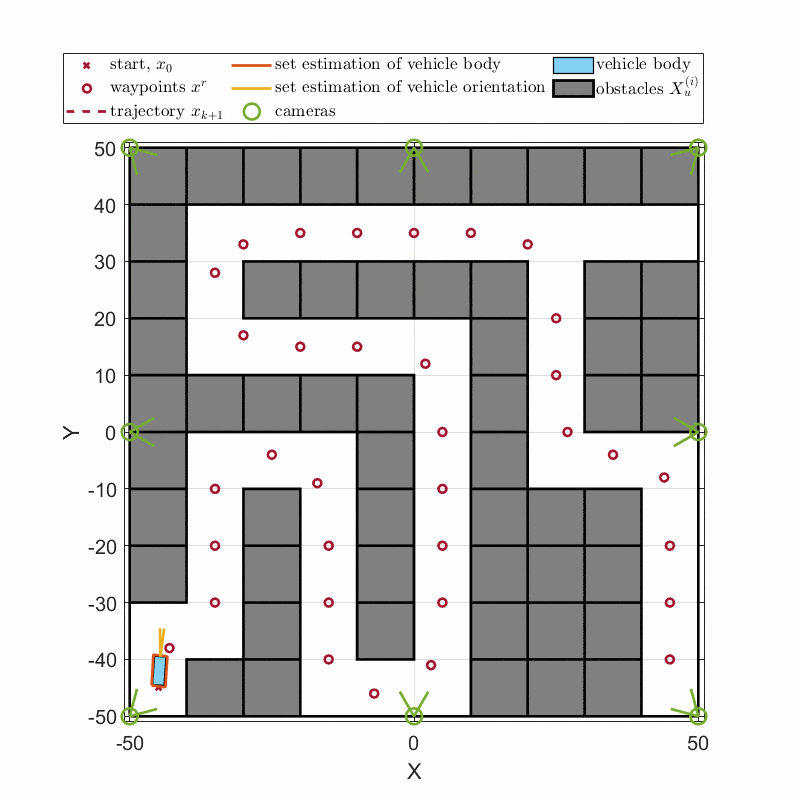System-level Safety Guard: Safe Tracking Control through Uncertain Neural Network Dynamics Models
Published in 6th Annual Learning for Dynamics & Control Conference, 2024
Xiao Li, Yutong Li, Anouck Girard, Ilya Kolmanovsky (Selected for Oral Presentation, 7.5%)
The Neural Network (NN), as a black-box function approximator, has been considered in many control and robotics applications. However, difficulties in verifying the overall system safety in the presence of uncertainties hinder the modular deployment of NN in safety-critical systems. In this paper, we leverage the NNs as predictive models for trajectory tracking of unknown dynamical systems. We consider controller design in the presence of both intrinsic uncertainty and uncertainties from other system modules. In this setting, we formulate the constrained trajectory tracking problem and show that it can be solved using Mixed-integer Linear Programming (MILP). The proposed MILP-based solution enjoys a provable safety guarantee for the overall system, and the approach is empirically demonstrated in robot navigation and obstacle avoidance through simulations.
[paper · code · full report]
Obstacle Avoidance and Reachability-Guided RRT:
Obstacle avoidance using an omnidirectional robot: The reachability-guided RRT algorithm expands the tree from the start to the goal over the safe region. Then, we use the Dijkstra planning algorithm to find a reference path (black lines with red dots) from start to goal that has the shortest distance. We use the proposed method to track the reference states (red dots). Our method can guarantee that the robot is collision-free under uncertainties, i.e., the unknown actual states in blue asterisks are in the safe region, even with most of the reference points located near the obstacles.

Vehicle Navigation and Set-theoretical Localization:
Navigation of a vehicle through a maze with our tracking controller and with a set-theoretic localization algorithm: The set-theoretic localization algorithm provides estimates of the vehicle body (orange boxes) and orientation (yellow lines) that are guaranteed to contain the actual ones. The tracking controller leverages this information, together with an NN-learned vehicle dynamics model, to avoid obstacles.

